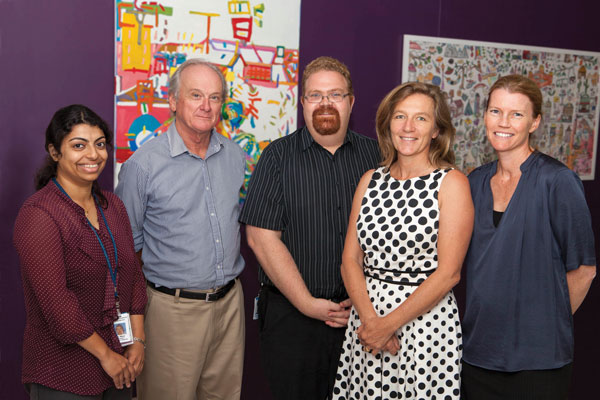Search
Research
Priority setting: Development of the South Australian Aboriginal Chronic Disease Consortium RoadMap for ActionAboriginal and Torres Strait Islander (Aboriginal) people in South Australia are overburdened by cardiovascular disease, diabetes and cancer. The South Australian Aboriginal Chronic Disease Consortium (Consortium) was established in June 2017 as a collaborative partnership to lead the implementation of three state-wide chronic disease plans using a strategic approach to identifying key priority areas for action.
Research
Real-world glycaemic outcomes in children and young people on advanced hybrid closed-loop therapy: A population-based study in Western AustraliaTo evaluate real-world glycaemic outcomes in children with type 1 diabetes commencing advanced hybrid closed loop therapy and to explore these outcomes based on the cohort's clinical and socioeconomic characteristics.
Research
Disparities in Diabetes Technology Uptake in Youth and Young Adults With Type 1 Diabetes: A Global PerspectiveGlobally, nearly 9 million people are living with type 1 diabetes (T1D). Although the incidence of T1D is not affected by socioeconomic status, the development of complications and limited access to modern therapy is overrepresented in vulnerable populations. Diabetes technology, specifically continuous glucose monitoring and automated insulin delivery systems, are considered the gold standard for management of T1D, yet access to these technologies varies widely across countries and regions, and varies widely even within high-income countries.
Research
Short-Term Diabetic Retinopathy Status in People with Type 1 Diabetes Commencing Automated Insulin DeliveryRapid improvements in glucose control may lead to early worsening of diabetic retinopathy (EWDR). There is a need to demonstrate safety in people commencing automated insulin delivery (AID) due to the known efficacy in rapid glycemic improvement. We aimed to investigate short-term DR outcomes in people (aged ≥13 years) with type 1 diabetes after initiation of AID (use ≥6 months).
Research
Defining relevant hypoglycemia measures in children and adolescents with type 1 diabetesAs the choices of therapies in diabetes care multiply, it is essential to standardize the approach to measuring and recording hypoglycemia risk
Research
Comparable glycemic outcomes for pediatric type 1 diabetes patients in metropolitan and non-metropolitan regions of Western Australia: A population-based studyThis study reports similar glycemic outcomes for patients attending diabetes clinics in metropolitan and non-metropolitan areas of WA
Research
Reduction in hypoglycemia with the predictive low-Glucose management system: A long-term randomized controlled trial in adolescents with type 1 diabetesShort-term studies with automated systems that suspend insulin when hypoglycemia is predicted have shown a reduction, but safety and efficacy aren't established

News & Events
High hopes for preventing lowsResearchers led by the team at the Children’s Diabetes Centre at The Kids have taken a key step to a fully automated closed-loop insulin delivery system.
Research
Reduced prevalence of impaired awareness of hypoglycemia in a population-based clinic sample of youth with type 1 diabetesThe aim of this study was to determine the change in prevalence of Impaired awareness of hypoglycemia in adolescents with Type 1 diabetes
Research
Maternal smoking during pregnancy and the risk of childhood type 1 diabetes in Western AustraliaThe aim of this study was to investigate the association between maternal smoking during pregnancy and type 1 diabetes in the offspring, using complete...
